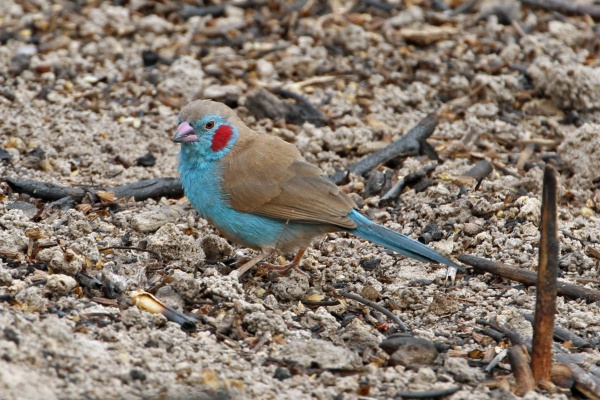Facts About Red-cheeked cordon-bleu
The red-cheeked cordon-bleu is a delightful small bird found in the arid regions of tropical Sub-Saharan Africa. This diminutive passerine, a member of the Estrildidae family, boasts an impressive range spanning approximately 7.7 million square kilometers. It belongs to the Uraeginthus genus, closely related to the blue-capped cordon-bleu and the blue waxbill. The species includes four subspecies, mainly distinguished by the extent of blue on the females' faces and underparts.
Visually, the red-cheeked cordon-bleu is striking. Males exhibit brown upperparts, a pale blue breast, flanks, and tail, a yellow belly, and a notable red spot on each cheek. Females lack the cheek spots and are generally more subdued in color. Both sexes are known for their distinctive calls and songs, with females often singing before laying eggs.
These birds are commonly found across central and eastern Africa, thriving in a variety of habitats except dense forests. They can be seen from sea level up to 2,430 meters in elevation, preferring open dry grasslands, savannas, and areas near human settlements. Their diet predominantly consists of grass seeds, but they also enjoy millet, small seeds, and occasionally beeswax.
In terms of breeding, red-cheeked cordon-bleus construct large, domed grass nests and typically lay 4-5 white eggs.
Among avian enthusiasts, these finches are quite popular. They do not have any particular housing requirements but are sensitive to cold due to their roosting habits. During the breeding season, males can become somewhat territorial and aggressive, and any disturbances during incubation might cause them to abandon their nests.

 Benin
Benin